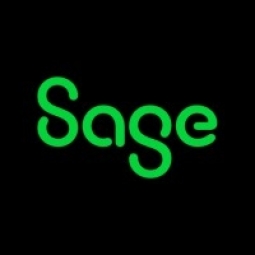Customer Company Size
Mid-size Company
Region
- America
Country
- Canada
Product
- Sage X3
Tech Stack
- Business Management Software
- Material Requirements Planning (MRP)
Implementation Scale
- Enterprise-wide Deployment
Impact Metrics
- Productivity Improvements
- Cost Savings
Technology Category
- Functional Applications - Enterprise Resource Planning Systems (ERP)
Applicable Industries
- Food & Beverage
Applicable Functions
- Discrete Manufacturing
- Logistics & Transportation
Use Cases
- Inventory Management
- Manufacturing System Automation
Services
- System Integration
About The Customer
Reinhart Foods Ltd. is Canada’s largest vinegar producer and has been supplying a wide assortment of vinegar products to manufacturers, industry, and distribution partners for more than 60 years. More recent additions to the company’s successful product lineup include flaked coconut, pie fillings, and dried fruit. With three state-of-the-art facilities located in Toronto, Quebec, and Vancouver, Reinhart Foods remains at the pinnacle of its industry through an unwavering commitment to quality, safety, efficiency, and customer service. The company has 145 employees and is headquartered in Toronto, Ontario.
The Challenge
Reinhart Foods had been relying on a legacy accounting system and spreadsheets for its operations. The lack of an integrated solution made access to actionable data difficult, and inefficiencies were hampering the company’s growth trajectory. The company was only using the old software for general ledger transactions, with everything else being accomplished with spreadsheets. This situation was not sustainable for a company looking to grow and improve its operations. The company needed a modern business management application that could integrate its entire operation and support its growth trajectory.
The Solution
Reinhart Foods selected Sage X3 as its new modern business management solution after a comprehensive evaluation of 20 potential applications. Sage X3 was chosen for its ability to integrate the entire operation of Reinhart Foods, from order entry and shipping, through demand forecasting. It provides the company with material requirements planning (MRP) capabilities, access to accurate, up-to-date information, and tight lot control functionality. The implementation of Sage X3 was smooth and well-planned, which jump-started the company’s return on investment. The company now has access to real-time data which speeds and improves decision making. MRP capabilities ensure the company is stocking the right product mix in the correct quantities. Comprehensive lot tracking ensures safety, quality, and compliance.
Operational Impact

Case Study missing?
Start adding your own!
Register with your work email and create a new case study profile for your business.
Related Case Studies.

Case Study
The Kellogg Company
Kellogg keeps a close eye on its trade spend, analyzing large volumes of data and running complex simulations to predict which promotional activities will be the most effective. Kellogg needed to decrease the trade spend but its traditional relational database on premises could not keep up with the pace of demand.

Case Study
HEINEKEN Uses the Cloud to Reach 10.5 Million Consumers
For 2012 campaign, the Bond promotion, it planned to launch the campaign at the same time everywhere on the planet. That created unprecedented challenges for HEINEKEN—nowhere more so than in its technology operation. The primary digital content for the campaign was a 100-megabyte movie that had to play flawlessly for millions of viewers worldwide. After all, Bond never fails. No one was going to tolerate a technology failure that might bruise his brand.Previously, HEINEKEN had supported digital media at its outsourced datacenter. But that datacenter lacked the computing resources HEINEKEN needed, and building them—especially to support peak traffic that would total millions of simultaneous hits—would have been both time-consuming and expensive. Nor would it have provided the geographic reach that HEINEKEN needed to minimize latency worldwide.

Case Study
Energy Management System at Sugar Industry
The company wanted to use the information from the system to claim under the renewable energy certificate scheme. The benefit to the company under the renewable energy certificates is Rs 75 million a year. To enable the above, an end-to-end solution for load monitoring, consumption monitoring, online data monitoring, automatic meter data acquisition which can be exported to SAP and other applications is required.

Case Study
Coca Cola Swaziland Conco Case Study
Coco Cola Swaziland, South Africa would like to find a solution that would enable the following results: - Reduce energy consumption by 20% in one year. - Formulate a series of strategic initiatives that would enlist the commitment of corporate management and create employee awareness while helping meet departmental targets and investing in tools that assist with energy management. - Formulate a series of tactical initiatives that would optimize energy usage on the shop floor. These would include charging forklifts and running cold rooms only during off-peak periods, running the dust extractors only during working hours and basing lights and air-conditioning on someone’s presence. - Increase visibility into the factory and other processes. - Enable limited, non-intrusive control functions for certain processes.

Case Study
Temperature Monitoring for Restaurant Food Storage
When it came to implementing a solution, Mr. Nesbitt had an idea of what functionality that he wanted. Although not mandated by Health Canada, Mr. Nesbitt wanted to ensure quality control issues met the highest possible standards as part of his commitment to top-of-class food services. This wish list included an easy-to use temperature-monitoring system that could provide a visible display of the temperatures of all of his refrigerators and freezers, including historical information so that he could review the performance of his equipment. It also had to provide alert notification (but email alerts and SMS text message alerts) to alert key staff in the event that a cooling system was exceeding pre-set warning limits.

Case Study
Coca-Cola Refreshments, U.S.
Coca-Cola Refreshments owns and manages Coca-Cola branded refrigerators in retail establishments. Legacy systems were used to locate equipment information by logging onto multiple servers which took up to 8 hours to update information on 30-40 units. The company had no overall visibility into equipment status or maintenance history.







